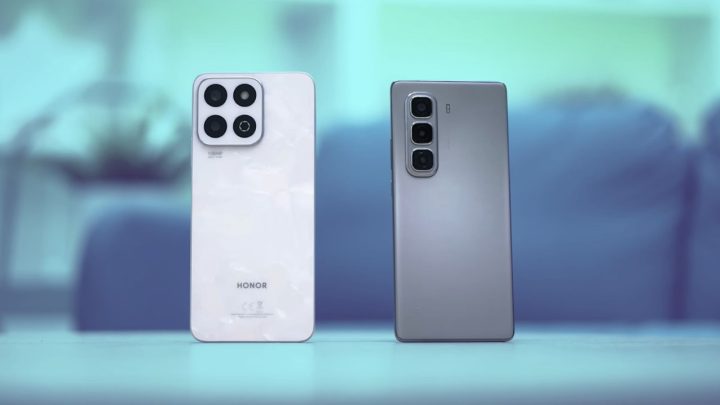
The HONOR X7c has recently made waves in the Philippines, and I mean that literally. You see, Honor is touting this phone’s so-called “all-angle water resistance” as its key selling feature.
While not being so upfront about it, the Infinix HOT 50 Pro+ also comes with that same level of water resistance. But that’s just one point of comparison between these two.
Beyond the added protection, what else do they have to offer at similar price points of just under nine thousand pesos?
Let’s find out in our comparison review of the Infinix HOT 50 Pro+ versus the HONOR X7c. Let’s dive right in!
Table of Contents
On the outside, each phone has a distinctive design language. The Infinix HOT 50 Pro+ sports quite a unique yet familiar look with a left-aligned camera array.

Taking a closer look, you will notice that the phone comes with square shaped modules, and the camera island even has this knurled-edge design on the contour.
Don’t be fooled though, while the phone looks like it has three cameras, there’s just actually two of them. We’ll talk more about its cameras later in this comparison.
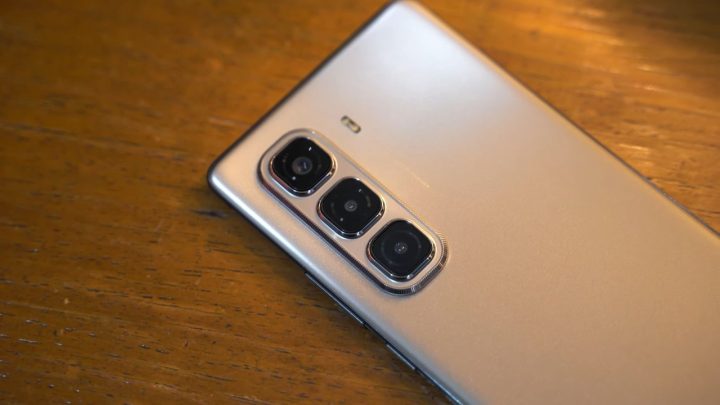
The HOT 50 Pro+ has subtle curves all around making it look thinner from the sides. The phone measures a mere 6.8 mm and is even lighter than the competition, weighing only 162 grams. Its frame is mostly flat, and the plastic back comes in a matte finish that should minimize smudges.
Meanwhile, the HONOR X7c sports a familiar aesthetic with a square-shaped camera island on the left. And just like the Infinix, HONOR also made it look like it has four cameras, but again, it’s only a dual rear setup.
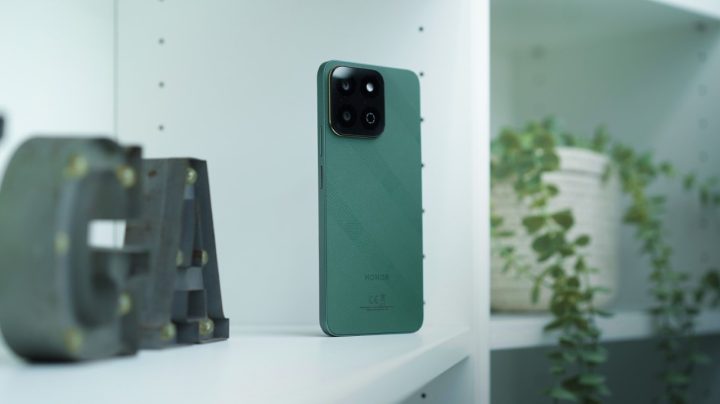
The rest of the back panel comes with a faux leather look splashed with some plaid-like pattern on top. Its frame is also flat and color-matched, but the phone is a bit thicker and heavier measuring 8.24 mm and 196 grams, respectively.
Now, let’s talk about the X7c’s main selling point: its water resistance. Honor showcased the X7c being dunked underwater and even blasted with high pressure water, and the phone still works as intended. But do take this as a reminder that the X7c is not meant for those extreme tests.
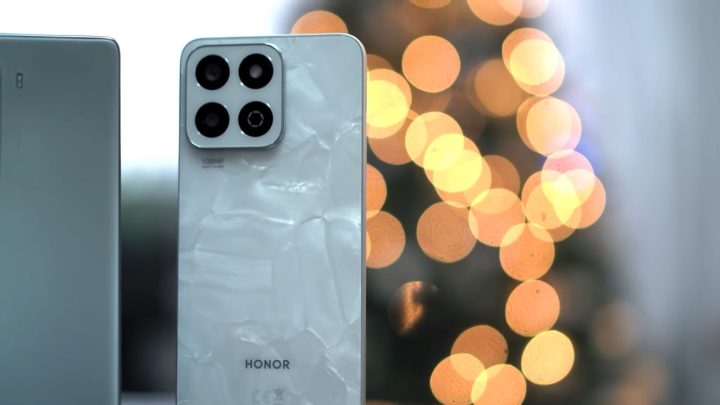
Like I explained in my HONOR X7c Review, the phone just gets an IP64 rating which only provides protection against splashing water. While it could technically survive a drop in the pool for a short amount of time, its water resistance eventually wears off, so you still have to be careful.

When you look at other phones — under nine thousand pesos in particular — you may realize that this so-called water resistance is really not that special. Because just like the HONOR X7c, the Infinix HOT 50 Pro+ also features basically the same level of water resistance which is IP54.
What sets the X7c apart in terms of durability is its five-star drop resistance certification, so there’s also that.
Design may be subjective, but the sleek, chic profile of the Infinix HOT 50 Pro+ can’t be ignored. And not to mention, its razor-thin body is a fashion statement which is something you would not expect out of a budget phone.

The HONOR X7c’s durable build is surely one of its key strengths, although it doesn’t quite look as elegant as with the competition. Besides, both phones do have the same level of water resistance and the X7c’s drop resistance wouldn’t matter that much as you can just simply slap on a protective case and call it a day.
So, with that, I’ll give this round to the Infinix HOT 50 Pro+.
Flip both phones over and you’ll be greeted by curved and flat displays. This is where we can see a major difference between the two.

The HOT 50 Pro+ boasts a 6.78-inch Full HD+ 3D Curved AMOLED panel with a peak brightness of 1300 nits and is protected by Gorilla Glass 5.
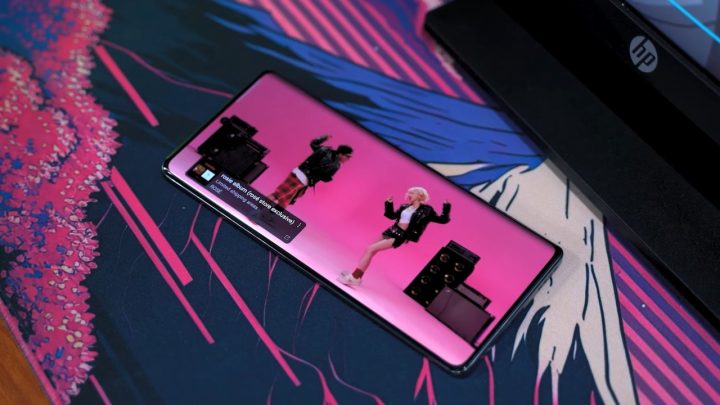
On the other hand, the HONOR X7c’s display is quite of a letdown, sporting a 6.77-inch HD+ TFT LCD panel that can reach a peak brightness of 850 nits.
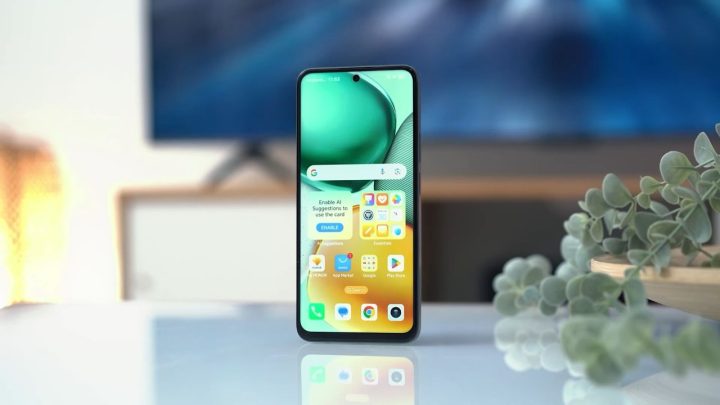
Both screens run at 120Hz refresh rate, but only the HOT 50 Pro+ has Widevine L1 support, whereas the X7c is left with only Widevine L3. This makes sense since the phone’s display is capped at only HD+ or exactly 1610 by 720 pixels.
As expected, the viewing experience is way better on the HOT 50 Pro+ with vivid colors and satisfying deep blacks thanks to its AMOLED display. As for the X7c, well, it is what you’d expect from a low-resolution LCD panel. Viewing angles are also not great because it uses a TFT type of LCD.
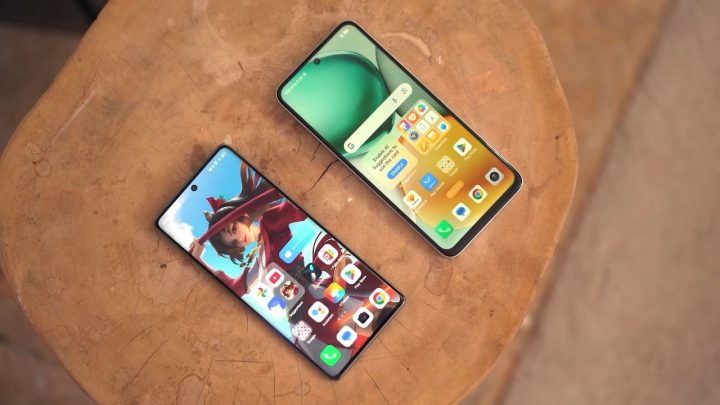
Both phones do come with dual stereo speakers for immersive audio but only the HOT 50 Pro+ gets sound tuning by JBL. On top of that, the HOT 50 Pro+ even features an under-display fingerprint sensor while the X7c is left with a side-mounted one.

With its high-resolution AMOLED screen alone, the Infinix HOT 50 Pro+ easily secures another point this round.
Now, let’s talk about performance.
The HOT 50 Pro+ is equipped with the MediaTek Helio G100 and the HONOR X7c is powered by the Snapdragon 685. Both phones come with the same configuration with 8GB of RAM and 256GB of internal storage. Gladly, both phones offer expandable storage via microSD.

In our testing, both garnered decent scores in ANTUTU. The HOT 50 Pro+ managed to get 446,101 points and the HONOR X7c got a lower score of 310,613 points.
Furthermore, the HOT 50 Pro+ managed to get more than triple the score of the HONOR X7c in both Geekbench 6 CPU Single Core and GPU tests as you can see below.
| Benchmark | Infinix HOT 50 Pro+ | HONOR X7c |
|---|---|---|
| Chipset | MediaTek Helio G100 | Qualcomm Snapdragon 685 |
| AnTuTu V10 | 446101 | 310,613 |
| 3DMark Wild Life | – | 650 |
| Geekbench 6 Single-Core | 742 | 470 |
| Geekbench 6 CPU Multi-Core | 2,034 | 1,463 |
| Geekbench 6 GPU OpenCL | 1,489 | 382 |
| Geekbench 6 GPU Vulkan | 1,498 | FAILED |
| PCMark Work 3.0 performance | 11,024 | 9,867 |
| PCMark Work 3.0 battery life | 13 hours and 53 minutes | 25 hours and 54 minutes |
The MediaTek Helio G100 being a gaming chipset that it is, these results just make sense.
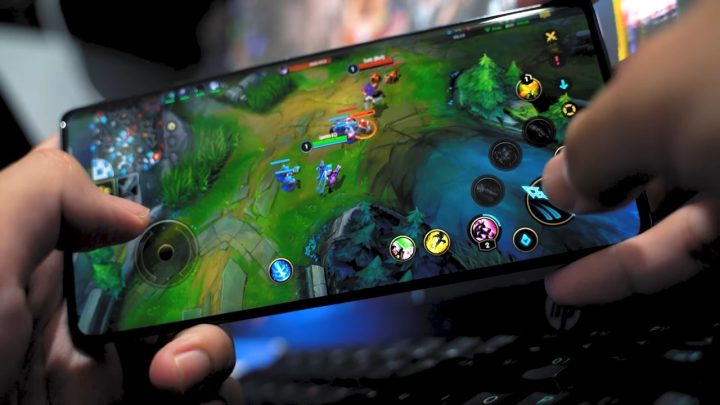
Despite the good numbers, you may have to set your expectations when it comes to gaming. For low-demanding titles such as Mobile Legends and other MOBA games, both phones can handle them just fine.
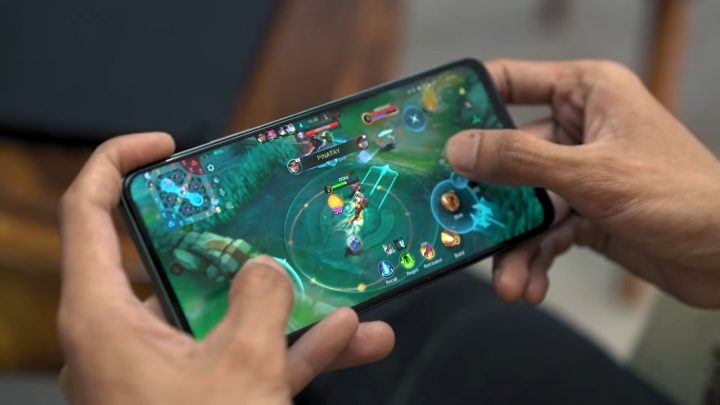
However, for graphically intensive titles like Genshin Impact, don’t expect a smooth experience. While playable at very low graphics settings, the gameplay can be frustrating due to inconsistent frame rates and overall low visual quality.
Setting all that gaming stuff aside, both phones are surely decent enough for your day-to-day tasks. While the numbers say that the HOT 50 Pro+ has a slight edge in graphical performance, that doesn’t really translate well to real world use cases.
So, with that, I’ll give both phones a point again this round.
For optics, the HOT 50 Pro+, despite the camera island looking like it has three sensors, only two of these are actual cameras: a 50-megapixel main shooter and the crowd-favorite, a 2-megapixel depth sensor.
The same goes for the HONOR X7c, also with a dual rear setup led by a 108-megapixel main camera, and a 2-megapixel depth sensor.
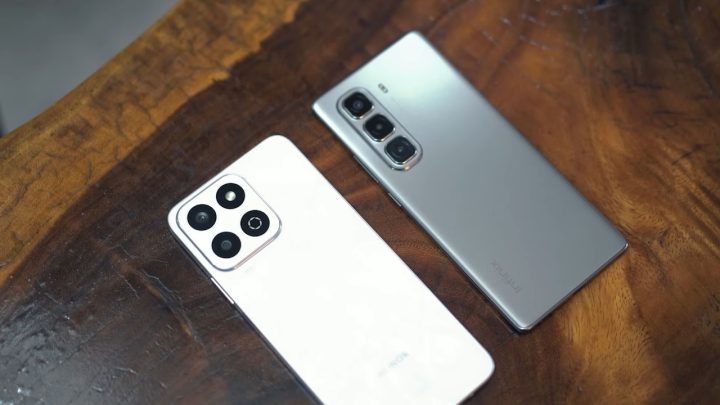
Images captured from both phones are decent with acceptable colors and seemingly subpar quality. You can see obvious grain even on those images taken in well-lit environments and despite the HONOR X7c having a higher megapixel count, the images look mostly soft.
Check out our sample shots as seen on the phones’ individual reviews to see how these phones perform in various shooting conditions:
In the camera department, both phones get the job done but they’re nothing out of the ordinary. So, again, I’ll give them both a point this round.
When it comes to battery life, the HONOR X7c has the upper hand here. It packs a larger 6000mAh unit paired with 35W of fast charging.

The Infinix HOT 50 Pro+ gets the usual 5,000mAh battery with 33W of charging.
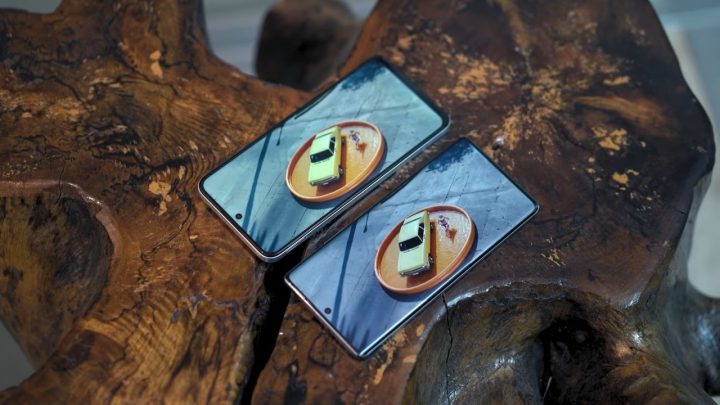
Looking at our PCMark battery life test, that significant bump in capacity yielded an impressive result for the X7c, outlasting the competition with an entire day of runtime at 25 hours and 54 minutes.
The HOT 50 Pro+ on the other hand, lasted 13 hours and 8 minutes which is still a decent score, considering it uses a high-resolution AMOLED display.
I figured that since the X7c utilizes an HD+ LCD panel, it wouldn’t draw that much power, contributing to the phone’s longer battery life.
Regardless, the HONOR X7c deserves the point this round.
On the software side of things, both phones run Android 14 out of the box with the HOT 50 Pro+ and the HONOR X7c skinned with XOS 14.5 and MagicOS 8.0, respectively.
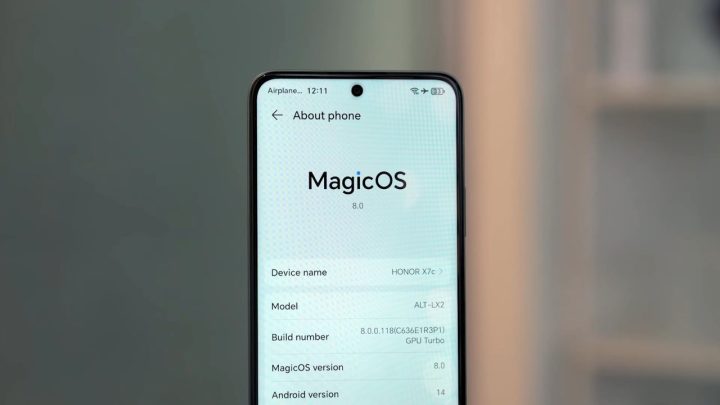
Personally, I would prefer the MagicOS skin just because it has less bloatware aside from the first-party HONOR apps, and it also has a more polished look.
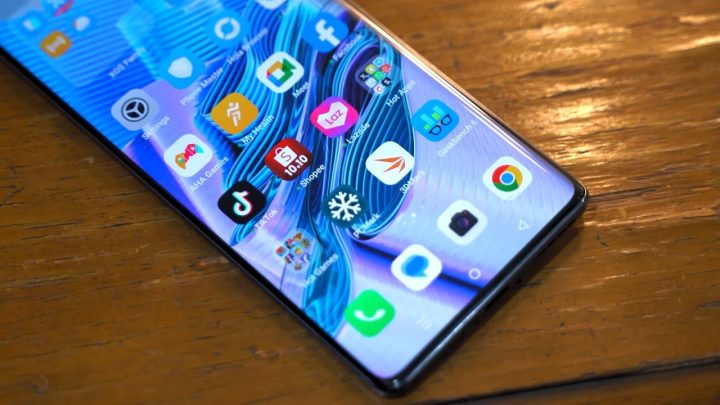
While I’ve seen improvements on XOS in terms of UI design, the amount of bloatware is unbearable. Although, since these phones belong in the budget segment, that just becomes a minor issue.
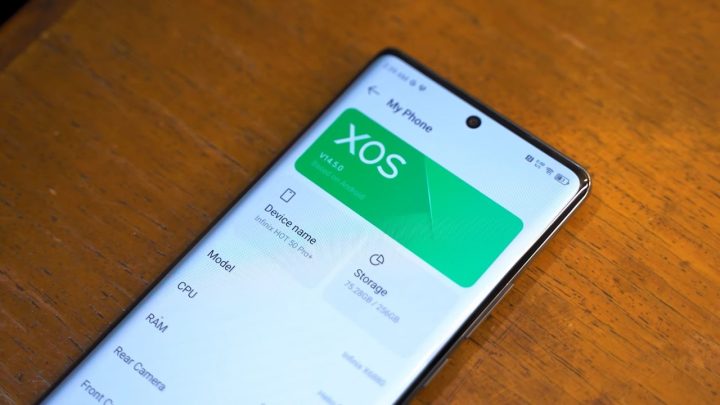
I like the fact that Infinix is being transparent on software support that they’re gonna provide for the HOT 50 Pro+. It gets a guaranteed upgrade to Android 15 and has up to two years of security patches.
Meanwhile, Honor did not mention a thing about the X7c’s update policy. But users can expect the same treatment as usual with at least one major OS upgrade and up to two years of security patches as well.
Connectivity-wise, all the essentials are here including 4G and NFC. What’s interesting is the 720-degree NFC card reading feature on the HOT 5O Pro+. This means that the phone can read NFC-enabled devices at any angle, which would be ideal for wireless payment transactions.
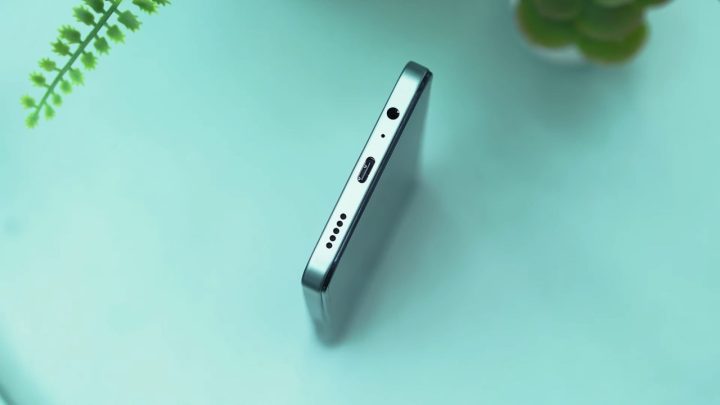
And we should not forget the 3.5 mm audio jack on the HONOR X7c which is a rare sight these days. However, that doesn’t really give it a big advantage. So, in this regard, I will give a point to both models.
When it comes down to it, the Infinix HOT 50 Pro+ takes the lead in this budget showdown with its sleek design, superior display, and respectable performance, coming in at just PHP 8,499 (8+256GB).

Its crisp, curved AMOLED display combined slim and light build make it a standout in the sub-9K peso price range. While it falls behind in battery life compared to the competition, it’s clear that Infinix’s phone offers more bang for your buck.

The HONOR X7c, priced at PHP 8,999 (8+256GB), shines in durability with its drop and water resistance and even outlasts the competition in terms of battery life. However, its lower-resolution display and less compelling design leave it a step behind.
It is indeed a solid pick if longevity and endurance are your top priorities. But it looks like the Infinix HOT 50 Pro+ is the more well-rounded option offering a taste of premium without a premium price.
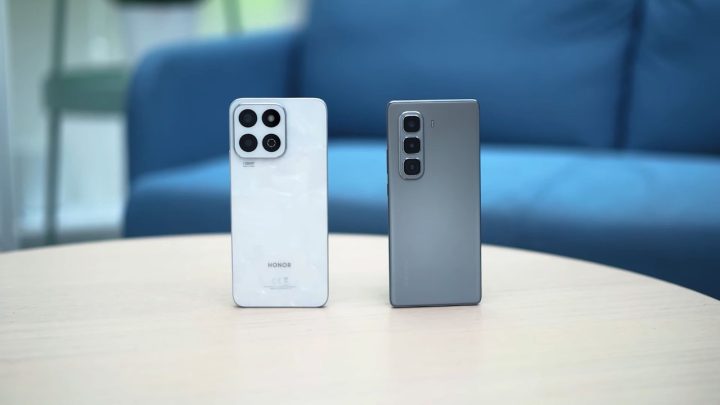
So, are you Team HONOR or Team Infinix in this comparison review? Share your thoughts in the comments below!
HONOR X7c vs Infinix HOT 50 Pro+ specs:
| HONOR X7c | Infinix HOT 50 Pro+ 4G |
|---|---|
| PHP 8,999 | 8+256GB | PHP 8,499 | 8+256GB |
| 6.77-inch HD+ TFT LCD | 6.78-inch FHD+ 3D-Curved AMOLED display |
| 1610 x 720 pixels, 120Hz refresh rate | 2436 x 1080 pixels, 120Hz refresh |
| 850-nit peak brightness | 1300-nit peak brightness |
| - | Corning Gorilla Glass 5 |
| Qualcomm Snapdragon 685 | MediaTek Helio G100 |
| 6nm, 8-cores, up to 2.8GHz | 6nm, 8-cores, up to 2.2GHz |
| 6GB, 8GB RAM (+8GB extended memory) | 8GB RAM |
| 128GB, 256GB storage | 256GB storage |
| Expandable via microSD | Expandable up to 1TB via microSD |
| Dual rear cameras: | Dual rear cameras: |
| - 108MP f/1.75 main | - 50MP f/1.6 main |
| - 2MP f/2.4 depth | - 2MP depth |
| 8MP f/2.0 selfie shooter (hole punch notch) | 13MP f/2.2 selfie shooter (hole punch notch) |
| Dual SIM | Dual nano-SIM |
| 4G LTE | 4G LTE |
| Wi-Fi 5, 802.11 a/b/g/n/ac | Wi-Fi |
| Bluetooth 5.0 | Bluetooth 5.2 |
| GPS | GPS, Beidou, GLONASS, Galileo, QZSS |
| USB Type-C | USB Type-C |
| 3.5mm audio jack | - |
| NFC | NFC | features 720-degree card reading |
| Side-mounted fingerprint sensor | Under-display fingerprint sensor |
| IP64 dust and splash resistance | IP54 dust and splash resistance |
| Dual stereo speakers, 300% high-volume mode | Dual stereo speakers (tuned by JBL) |
| MagicOS 8.0 (Android 14) | XOS 14.5, Android 14 |
| 6000mAh Li-po battery | 5000mAh battery |
| 35W charging (wired) | 33W charging (wired) |
| 166.9 x 76.8 x 8.24 mm | 8.09 mm (Midnight Black) | 164.10 x 74.43 x 6.8 mm |
| 196g | 194g (Midnight Black) | 162g |
| Midnight Black, Forest Green, Moonlight White (colorways) | Titanium Grey, Dreamy Purple, Sleek Black (colorways) |

YugaTech.com is the largest and longest-running technology site in the Philippines. Originally established in October 2002, the site was transformed into a full-fledged technology platform in 2005.
How to transfer, withdraw money from PayPal to GCash
Prices of Starlink satellite in the Philippines
Install Google GBox to Huawei smartphones
Pag-IBIG MP2 online application
How to check PhilHealth contributions online
How to find your SIM card serial number
Globe, PLDT, Converge, Sky: Unli fiber internet plans compared
10 biggest games in the Google Play Store
LTO periodic medical exam for 10-year licenses
Netflix codes to unlock hidden TV shows, movies
Apple, Asus, Cherry Mobile, Huawei, LG, Nokia, Oppo, Samsung, Sony, Vivo, Xiaomi, Lenovo, Infinix Mobile, Pocophone, Honor, iPhone, OnePlus, Tecno, Realme, HTC, Gionee, Kata, IQ00, Redmi, Razer, CloudFone, Motorola, Panasonic, TCL, Wiko
Best Android smartphones between PHP 20,000 - 25,000
Smartphones under PHP 10,000 in the Philippines
Smartphones under PHP 12K Philippines
Best smartphones for kids under PHP 7,000
Smartphones under PHP 15,000 in the Philippines
Best Android smartphones between PHP 15,000 - 20,000
Smartphones under PHP 20,000 in the Philippines
Most affordable 5G phones in the Philippines under PHP 20K
5G smartphones in the Philippines under PHP 16K
Smartphone pricelist Philippines 2024
Smartphone pricelist Philippines 2023
Smartphone pricelist Philippines 2022
Smartphone pricelist Philippines 2021
Smartphone pricelist Philippines 2020